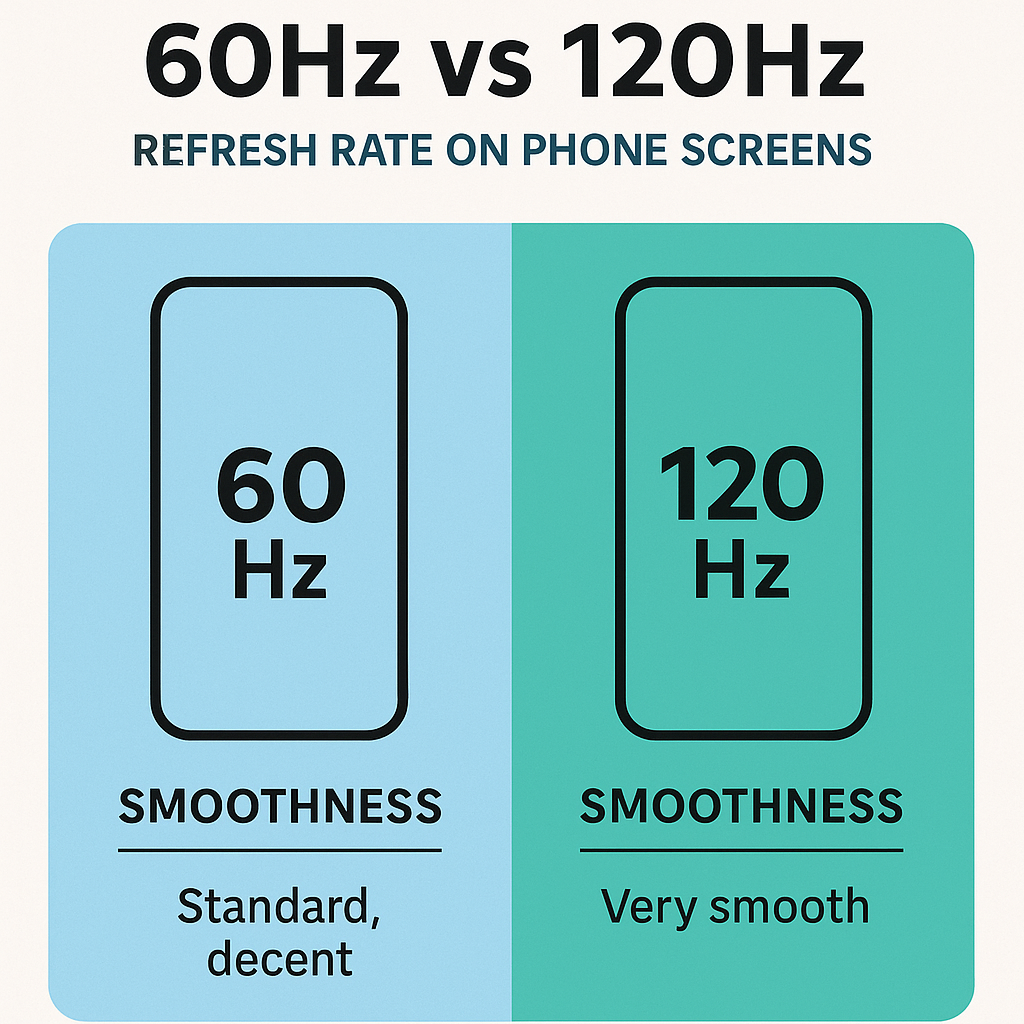Is 120Hz Refresh Rate on Your Phone Screen Really Better?
In today’s smartphone world, specs are thrown around like confetti. One term you’ve probably heard a lot is “120Hz refresh rate.” But what does it actually mean for you? Is it truly better — and is it worth paying extra for? Let’s break it down.

A Comprehensive Guide
In the ever-evolving world of smartphone technology, manufacturers constantly strive to deliver smoother, more immersive experiences. One feature that has gained significant traction in recent years is the high refresh rate display, with 120Hz becoming increasingly common.
But what exactly does this number mean, and more importantly, does it genuinely translate to a better user experience? Let’s dive into a comprehensive guide to understand the buzz around 120Hz refresh rates on phone screens.
Understanding Refresh Rate: The Basics
Imagine a flipbook: each page is a still image, and when you flip through them quickly, your brain perceives motion. A phone screen works on a similar principle.
The refresh rate, measured in Hertz (Hz), indicates how many times per second your phone’s display updates the image it shows.
- 60Hz = refreshes 60 times per second
- 120Hz = refreshes 120 times per second
Higher refresh rates mean smoother and more fluid visuals — and a more responsive experience.
60Hz vs 120Hz: What’s the Difference?
When you switch from a 60Hz screen to a 120Hz one, you immediately notice smoother transitions.
Here’s where you’ll feel the difference:
Scrolling
When you flick through social media, websites, or lists, a 120Hz display glides effortlessly, with significantly less blur compared to 60Hz.
Animations
System animations (like opening and closing apps or transitioning between screens) look slicker and more polished on a 120Hz display, creating a premium feel.
Gaming
Mobile gaming feels faster, smoother, and more responsive, giving you a potential competitive edge in fast-paced games.
Beyond Smoothness: Other Potential Advantages
- Reduced Motion Blur: Higher refresh rates minimize motion blur, especially during fast movements.
- Improved Responsiveness (Perceived): Although touch sampling rate is a separate metric, a 120Hz display feels more responsive because the screen updates visual feedback more quickly.
The Trade-offs: Battery Life and Cost
While the advantages are clear, there are important considerations:
Battery Consumption
Refreshing the screen twice as often uses more power.
Adaptive refresh rate technology helps by adjusting the refresh rate based on your activity (e.g., 60Hz for static content, 120Hz for gaming).
Cost
Phones with 120Hz screens often cost more due to the higher-end components required.
Is 120Hz Always Active?
Modern smartphones often feature adaptive refresh rates to save battery:
- Reading an eBook = 60Hz
- Scrolling fast = 120Hz
- Watching a video = 60Hz or 90Hz (depending on the frame rate)
This dynamic shifting gives you the best of both worlds — smoothness and efficiency.
Do You Really Need 120Hz?
You’ll love it if:
- You frequently scroll through content.
- You enjoy smooth, polished animations.
- You are an avid mobile gamer.
You might not notice much if:
- You mainly use your phone for calls, texts, and light browsing.
- Battery life is your biggest priority.
Conclusion: A Step Towards a Smoother Future
A 120Hz refresh rate on a phone screen undoubtedly offers a smoother and more visually pleasing experience. Scrolling feels more natural, animations become slicker, and gaming becomes more immersive.
However, this comes at the cost of potentially reduced battery life and higher device prices.
Thankfully, adaptive refresh rate technologies are rapidly evolving, balancing performance and efficiency better than ever before.
Bottom Line:
If smooth visuals, gaming, and overall polish are important to you, 120Hz is absolutely worth considering.
But if your needs are simpler, a good 60Hz display is still perfectly fine for daily use.
Ultimately, choose based on your usage habits — and once you experience 120Hz, you might just find it hard to go back!
Quick Comparison Chart
| Feature | 60Hz Display | 120Hz Display |
|---|---|---|
| Smoothness | Standard, decent | Very smooth and fluid |
| Gaming | Good for casual gaming | Excellent for fast-paced gaming |
| Battery Life | More efficient | Consumes more (adaptive modes help) |
| Cost | Generally lower | Higher (but falling over time) |
| Ideal for | Basic users | Power users and gamers |